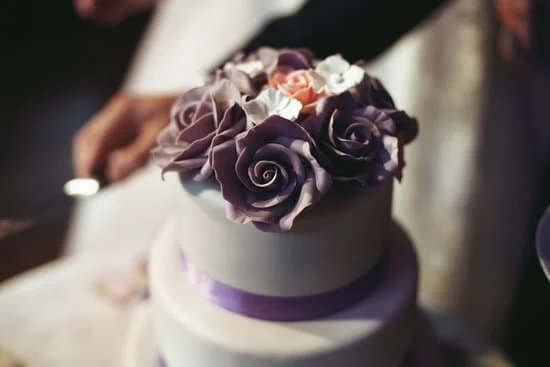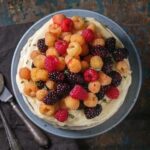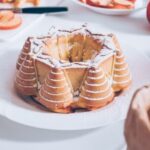When it comes to creating visually stunning and delectable treats, cake decoration plays a crucial role in elevating the overall presentation. Knowing what to decorate a cake with can make a significant difference in the final product, turning a simple dessert into a work of art. From colorful frosting to intricate fondant designs, the possibilities for decorating cakes are endless.
Cake decoration not only adds aesthetic appeal but also showcases the creativity and skill of the baker. Whether you are a novice baker looking to experiment with different techniques or an experienced pastry chef aiming to perfect your craft, understanding the various options for adorning cakes is essential. From classic buttercream to delicate royal icing, each type of frosting offers a unique texture and flavor profile that can enhance the taste and appearance of a cake.
In addition to exploring different types of frosting, edible decorations such as sprinkles, fresh fruit, chocolate shavings, and edible flowers can further enhance the visual appeal of a cake. These elements not only add color and texture but also provide additional layers of flavor that complement the base cake. By learning about various edible decorations and piping techniques like rosettes and swirls, bakers can unlock their creativity and transform ordinary cakes into extraordinary creations.
Types of Frosting
Cake decoration is an essential part of creating a visually appealing and mouth-watering dessert. One key element of cake decoration is the type of frosting used. Different types of frosting can create unique textures, flavors, and designs on a cake. Here are some popular types of frosting that you can use to decorate your next cake:
- Buttercream: Buttercream frosting is a classic choice for decorating cakes. It is perfect for piping intricate designs, smooth finishes, and adding decorations like flowers or borders.
- Royal Icing: Royal icing is a versatile frosting made from powdered sugar, egg whites, and water. It hardens when it dries, making it ideal for intricate designs, intricate piping work, and creating decorations that need to hold their shape.
- Fondant: Fondant is a smooth and pliable icing made from sugar, corn syrup, and gelatin. It can be rolled out into thin sheets to cover cakes smoothly or molded into various shapes for decorations like flowers or figurines.
- Whipped Cream: Whipped cream is light and fluffy, making it a great option for filling cakes, topping cupcakes, or creating simple decorations like rosettes or swirls.
Each type of frosting has its own unique characteristics and uses in cake decoration. Depending on the desired look and taste of your cake, you can choose the best frosting to suit your needs and preferences.
When deciding what to decorate a cake with in terms of frosting, consider factors such as the theme of the event, the flavor profile of the cake itself, and your skill level in decorating. Experimenting with different types of frosting can help you discover new techniques and styles to elevate your cake decorating skills.
In addition to choosing the right type of frosting for your cake decoration needs, don’t forget about incorporating other elements like edible decorations, piping techniques, fondant decorations,and color theory to create stunning cakes that not only look amazing but also taste delicious. With the right tools and techniques at your disposal, you can turn any ordinary cake into a work of art that will impress your family and friends alike.
Edible Decorations
When it comes to decorating a cake, the options for edible decorations are endless. From adding a sprinkle of color with sprinkles to creating a beautiful and natural look with edible flowers, there are numerous ways to enhance the visual appeal of your cake. Here are some popular edible decorations that you can use to elevate your cake design:
- Sprinkles: Sprinkles come in various shapes, sizes, and colors, making them a versatile choice for decorating cakes. Whether you opt for classic rainbow sprinkles or shimmering metallic ones, sprinkles add a fun and festive touch to any cake.
- Edible Flowers: Edible flowers not only bring a pop of color to your cake but also add an elegant touch. From delicate rose petals to vibrant pansies, edible flowers can be used whole or as individual petals to create stunning floral arrangements on your cakes.
- Chocolate Shavings: Chocolate shavings are a simple yet sophisticated way to decorate a cake. Whether you prefer dark chocolate, white chocolate, or milk chocolate shavings, they add texture and richness to your design.
- Fresh Fruit: Fresh fruit is not only delicious but also visually appealing when used as a decoration on cakes. From sliced strawberries and kiwi to whole berries and citrus wedges, fresh fruit can brighten up any cake with its natural beauty.
Incorporating edible decorations into your cake design allows you to personalize your creation and cater to different tastes and preferences. Whether you’re aiming for a whimsical look with colorful sprinkles or a more sophisticated design with fresh fruit and chocolate shavings, experimenting with various edible decorations can help you create a visually stunning and delectable masterpiece.
Remember that while using edible decorations is a creative way to adorn your cakes, it’s essential to consider the flavor profiles and textures of the decorations in relation to the cake itself. Finding the right balance between aesthetics and taste will ensure that your decorated cake not only looks fantastic but also tastes delicious. So don’t be afraid to get creative with what you decorate a cake with – the possibilities are endless.
Piping Techniques
Rosettes
Rosettes are a classic and versatile piping technique that can add elegance to any cake. To achieve rosettes, simply attach a star-shaped piping tip to a piping bag filled with your desired frosting.
Start at the center of the cake and pipe in a circular motion outward, creating layers of petals until you reach the desired size for your rosette. You can also vary the size of your rosettes for a more dynamic look or combine different colors of frosting to create a stunning bouquet effect.
Swirls
Swirls are another popular piping technique that can quickly elevate the appearance of a cake. With a round piping tip attached to your piping bag, start at one edge of the cake and pipe in a swirling motion towards the center.
Repeat this process around the entire cake, creating rows of beautiful swirls that give a sense of movement and texture. Swirls work well on both round and sheet cakes and can be easily customized by changing the angle or pressure of your piping.
Borders
Borders are essential for framing the edges of a cake and adding a polished finish to your design. There are various border styles you can choose from, such as shell borders, bead borders, or scalloped borders.
Using a specialty piping tip designed for borders, carefully pipe along the edges of the cake in consistent motions to create an even and decorative border. Borders not only enhance the visual appeal but also help keep any fillings or layers inside the cake secure.
By mastering these popular piping techniques like rosettes, swirls, and borders, you can add dimension, texture, and creativity to your cake designs. Experiment with different colors, shapes, and patterns to create unique decorations that suit any occasion or theme. Remember to practice patience and precision when piping to achieve professional-looking results that will impress your family and friends.
Fondant Decorations
One of the most common fondant decorations is flowers. These delicate creations can range from simple blossoms to elaborate floral arrangements, adding a touch of elegance to the cake. By using flower cutters or shaping tools, you can easily create beautiful blooms in various sizes and colors to suit your cake design.
In addition to flowers, figurines made out of fondant can also be used to decorate cakes. Whether it’s a playful character for a kid’s birthday cake or a sophisticated bride and groom for a wedding cake topper, fondant figurines allow for personalization and customization. With some practice and patience, you can sculpt whimsical or realistic figures to enhance the theme of your cake.
For those looking to add intricate designs to their cakes, fondant offers endless creative possibilities. From intricate lace patterns and geometric shapes to monograms and 3D elements, fondant can be molded and shaped into virtually any design imaginable. With the right tools and techniques, you can achieve detailed decorations that will impress any recipient of your beautifully adorned cake.
Overall, using fondant decorations on cakes provides an opportunity for creativity and artistry in the realm of baking. Whether you’re looking to create simple embellishments or elaborate masterpieces, fondant offers a versatile medium for bringing your cake decorating visions to life. Experiment with different shapes, colors, and techniques to discover what works best for your unique style and taste preferences when it comes to decorating cakes with fondant.
Tools and Equipment
When it comes to decorating a cake, having the right tools and equipment is essential to achieve professional-looking results. From piping bags to offset spatulas, each tool plays a crucial role in creating beautiful designs and intricate decorations on cakes. Let’s explore some of the essential tools and equipment needed for cake decoration:
Piping Bags and Tips
Piping bags are indispensable when it comes to adding frosting or buttercream decorations to a cake. These disposable or reusable bags come in various sizes and materials, allowing for different levels of control when piping frosting onto cakes. Paired with an assortment of tips such as round tips for writing or outlining, star tips for rosettes or borders, and petal tips for floral designs, piping bags are versatile tools that can elevate the overall look of a cake.
Offset Spatulas
Offset spatulas are handy tools for spreading frosting evenly and smoothly on cakes. Their angled design allows decorators to have better control while icing the sides and tops of cakes. Offset spatulas come in different sizes, making them suitable for both intricate detail work and large surfaces. Whether you’re applying a crumb coat or final layer of frosting, having an offset spatula in your toolkit is essential for achieving professional-looking results.
Fondant Molds
Fondant molds are indispensable for creating detailed fondant decorations like flowers, figures, or shapes to adorn cakes. These silicone molds come in a variety of designs and sizes, making them versatile tools for adding intricate elements to cake designs.
Whether you’re a beginner decorator looking to add simple details or an experienced baker aiming for complex fondant decorations, investing in quality fondant molds can help elevate your cake decorating skills. With these essential tools and equipment at your disposal, you’ll be well-equipped to create stunning cakes adorned with beautiful decorations sure to impress any crowd.
By having the right tools at hand, decorators can unleash their creativity and bring their cake decorating visions to life with ease.
Color Theory
When it comes to decorating cakes, understanding color theory is essential in creating visually stunning designs. Color theory is the study of how colors interact with each other and how different color combinations can evoke certain emotions or create a specific aesthetic. By applying basic color principles to cake decoration, you can elevate the overall look of your cake and make it more appealing to the eye.
One common aspect of color theory in cake decoration is choosing complementary colors that work well together to create contrast and visual interest. Complementary colors are those that are opposite each other on the color wheel, such as red and green, blue and orange, or yellow and purple. By using complementary colors in your cake decorations, you can make certain elements stand out and create a dynamic visual impact.
Another important consideration when choosing color schemes for cake decoration is understanding the psychology of colors. Different colors can evoke specific emotions or moods, so selecting the right color scheme for a particular occasion or theme can enhance the overall appeal of your cake.
For example, warm colors like red, orange, and yellow are often associated with energy and excitement, while cool colors like blue, green, and purple convey calmness and serenity. By being mindful of the emotions that different colors elicit, you can tailor your color choices to suit the mood you want to convey through your cake design.
| Color Theory Principles in Cake Decoration | Benefits |
|---|---|
| Complementary Colors | Create contrast and visual interest |
| Psychology of Colors | Evoke specific emotions or moods |
In addition to complementary colors and emotional associations, considering factors like color intensity, saturation, and balance is crucial in creating harmonious designs when decorating a cake. By experimenting with different color combinations and learning how they interact with each other, you can develop your skills in utilizing color effectively in cake decoration.
Whether you opt for bold and vibrant hues or soft pastel shades, mastering color theory will enable you to craft visually appealing cakes that leave a lasting impression on anyone who sees them.
Overall, understanding the basics of color theory and implementing thoughtful color schemes in your cake decoration process can take your creations to new heights. By leveraging the principles of complementary colors, emotional responses to specific hues, and elements like intensity and balance in your designs, you can transform a simple cake into a work of art that delights both the eyes and taste buds.
So next time you’re wondering what to decorate a cake with, remember that incorporating color theory into your creative process can elevate your cakes from ordinary confections to extraordinary masterpieces.
Tips and Tricks
Decorating a cake can be a fun and creative process, but it also requires some skill and know-how to achieve professional-looking results. One of the essential aspects of cake decoration is achieving smooth frosting. To ensure your cake is beautifully decorated, start by applying a thin layer of frosting, known as a crumb coat, to seal in any loose crumbs.
Once the crumb coat has set, you can then apply a final layer of frosting for a smooth finish. Using an offset spatula and bench scraper can help you achieve clean lines and an even surface.
Preventing common mistakes during cake decoration is crucial to the overall success of your creation. One common mistake is not letting the cake fully cool before decorating it, which can cause the frosting to melt or slide off. Another mistake to avoid is overmixing your frosting, as this can lead to air bubbles and an uneven texture.
Additionally, using stale or expired ingredients can affect the taste and appearance of your decorated cake. By paying attention to these details, you can prevent common decorating mishaps and ensure a beautifully decorated cake.
When facing decorating challenges, it’s important to troubleshoot effectively to salvage your creation. If you encounter air bubbles in your frosting, try gently tapping the finished cake with a spoon or spatula to release them. For lopsided layers or uneven surfaces, use a cake leveler or knife to trim and adjust the height of the cakes before stacking them.
If your frosting becomes too soft or runny, refrigerate it briefly to firm up before continuing with your decoration process. By being prepared for potential challenges and knowing how to address them, you can confidently tackle any issues that arise during cake decoration.
| Key Tips | Prevention |
|---|---|
| Apply a crumb coat before final layer | Letting cakes cool completely before frosting |
| Use offset spatula for smooth finish | Avoid overmixing frosting |
| Troubleshoot air bubbles with gentle tapping | Avoid using stale ingredients |
Conclusion
In conclusion, decorating a cake is not just about making it visually appealing but also about adding a personal touch and creating something special for any occasion. From choosing the right frosting to selecting edible decorations and mastering piping techniques, there are endless possibilities when it comes to adorning a cake. Whether you opt for classic buttercream frosting with simple swirls or venture into intricate fondant designs, the key is to let your creativity shine through.
Experimenting with different colors, textures, and techniques can elevate your cake decoration game and impress your friends and family. Remember that practice makes perfect, so don’t be afraid to try new things and learn from any mistakes along the way. With the right tools and equipment at hand, such as piping bags, fondant molds, and offset spatulas, you can bring your cake decorating ideas to life.
So next time you’re tasked with preparing a cake for a celebration or simply want to indulge in some baking therapy, remember the tips and ideas shared in this article on what to decorate a cake with. Let your imagination run wild and have fun creating delectable masterpieces that not only taste delicious but also look absolutely stunning. Happy decorating.
Frequently Asked Questions
What Do You Use to Decorate a Cake?
When it comes to decorating a cake, there are various options to choose from. Common choices include buttercream frosting, fondant, edible flowers, piping gel designs, chocolate ganache, sprinkles, and fresh fruit. These elements can add color, texture, and flavor to your cake.
What Can I Top a Cake With Besides Frosting?
In addition to frosting, there are plenty of creative alternatives for topping a cake. You can use whipped cream, fruit coulis or compote, chopped nuts or seeds, caramel or butterscotch sauce, edible glitter or sparkles, chocolate shavings, or even a dusting of powdered sugar. These toppings can provide different tastes and visual appeal to your dessert.
What Are the 5 Kinds of Cake Decorating?
Cake decorating offers a wide range of styles and techniques for creating beautiful designs on cakes. Some common types include buttercream designs with piping bags for intricate patterns and borders; fondant decorations like ribbons and bows or 3D figures; royal icing for delicate details like lace work; gum paste flowers for realistic floral arrangements; and chocolate modeling for sculptural elements like animals or figurines.
Each type of cake decorating has its unique challenges and rewards for aspiring bakers and decorators alike.

Welcome to our cake decorating blog! My name is Destiny Flores, and I am the proud owner of a cake decorating business named Cake Karma. Our mission is to provide delicious, beautiful cakes for all occasions. We specialize in creating custom cakes that are tailored specifically to each customer’s individual needs and tastes.





